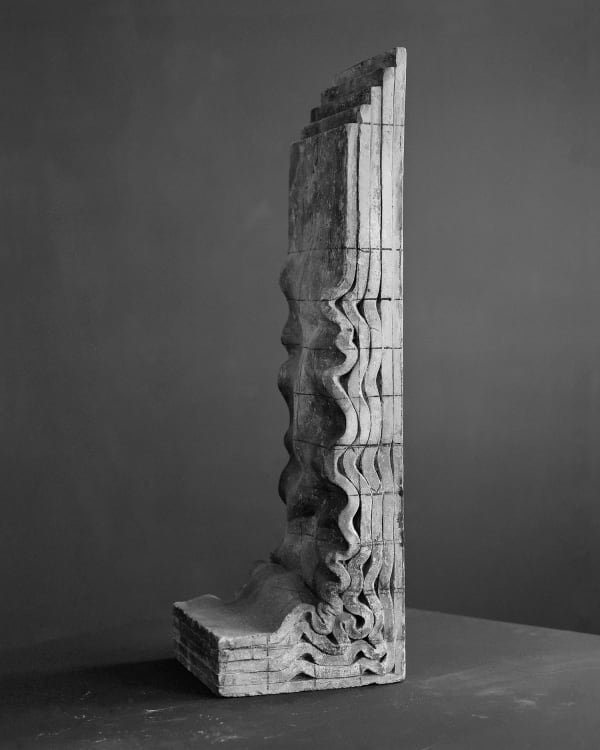Contemporary Korean Abstract : Series Two: Yang Jung Hwa, Oh Jong, Wang Duk Kyoung, Chun Eun, Jung Ji Hyun
Chapter II is delighted to announce a group exhibition, ‘Contemporary Korean Abstract: Series Two’, from 8th August to 7th September in 2019 in Yeonnam-dong, Seoul.
In April 2017, ‘Contemporary Korean Abstract: Series One’ presented selected works of emerging artists engaging in various media in an attempt to diligently underline diversity, peculiarity and hybridity of ‘Contemporary Korean Abstract Art’ which have been paradoxically veiled by international excessive interests in Dansaekwha. Under the assumption that ‘artists’ determination of creation’ which is an impetus for producing artworks is closely influenced by their lifestyle, the exhibition mainly introduced two-dimensional paintings of major artists including Sun Choi, Tae kwan Oh and Choo Suka to attract attention to trends of the current Korean abstract art.
To expand the thematic approaches of the first exhibition, this second exhibition of the series which opens in almost two years examines how borrowing materials and images of non-artistic spheres has contributed to the manifestation of abstraction. Especially, the installation works embracing the idea that physical properties of each material and its individuality are fundamentals of ‘representation’ will provide an opportunity to discover ongoing variations and diverse experiments in the field of abstract art.
Jong Oh (b.1981)’s Column #7(2019) occupies the space. His approach does not follow a typical mode of quantitative occupation in which an object accounts for a certain space through its physical nature such as volume and mass; Oh rather achieves ‘minimal and non-material occupation’ by constructing faintly-detected outlines and their interactions. Accordingly, the work demonstrates measuring off space, instead of being in the space. In this context, Oh’s practice can be interpreted as the visual embodiment of Gilles Deleuze’s (1925-1995) prominent concept, ‘Striated Spaces’. As though the vacant sky is densely divided by GPS coordinates, borderlines and intricate air routes, his fine steel frames lurk in the space and reveal their presence at the particular points where the audience’ gaze can respond to.
Yang Jung Hwa (b.1973)’s 'Untitled Figure’ (2019) captures a moment when arbitrary movements weave a particular pattern of repetitive shadows and their traces. Combining with a wide range of the shade spectrum caused by light’s intervention, the stripe figures diagonally elongated from the top left evoke a secretive impression. Consisting of only fine materials whose penetration rate is high, the work gains an effect of seemingly being permeated on the canvas surface and it eliminates illusory elements. It consequently arouses an inspiration of demonstrating something per se, rather than depicting it.
Wang Duk Kyoung (b.1981)’s ‘Vas Hermetis’ (2016 - 2019)' is a cube comprised of accumulated minute grains of dolomite and silica. It metaphorically visualizes the course of which the myth of permanence abided in all things collapses through time. As the properties of sand grains are maintained, the collapse in this context indicates that each particle deviates from its originally given coordinate while it is ground into the shape of a cube. Being influenced by the lapse of time and gravity, the deviation steadily occurs in a vertical direction and it addresses a question about our educated prejudice automatically recalled due to the work’s minimal appearance and installation modes within the framework of art history.
‘Le Repos Incomplet’ (2016-2017), Chun Eun (b.1977)’s series of photographing sculptures from various angles, brings up a noteworthy topic concerning photography’s duality oscillating between representation and creation. By shooting arbitrarily selected multiple sections of sculptures, Chun allows spectators to encounter assembled images of subjects whose dimensions and functions are hardly estimated. It is difficult to identify whether the abstractness observed in the images is an extension of the sculptures’ intrinsic external features or a quality newly established by the artist’s intention. The subjects in the center neatly staged by general studio shooting techniques create a solemn atmosphere, and moreover, they reinforce the status of artists as an omniscient observer.
‘Egg Stack, Terrazzo, Heavy Stone’ (2019) by Jung Ji Hyun (b.1986) invites viewers to the landscapes where an unexpected combination of objects unintentionally proceeds to. As we are always exposed by architectures, industries and cycles of essential products which support a material structure of our society, the destinations led by the artist are considerably unfamiliar, though they are not entirely uncanny places. Jung collected the objects regardless of their original functions and typical combining styles. Suggesting several notions including the absence of functions, the disturbance in universality and irrational occupations, the work settles in an uncomfortable spot of our consciousness. It shows the artist’s continuous interests and investigation into the critical borderline where industrial goods are shifted into objects of Ready-made.













